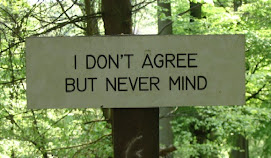I like bookshops and libraries. I read loads, mostly fiction, with a sprinkling of 'real' stuff thrown in too, whether it's of the
'How To . . . ' variety (recently I've read about NLP, project management, report writing, and presentation skills) or periodicals such as the BMF's Motorcycle Rider magazine, DIA's Driving, or 'Eureka', an engineering and innovation magazine.
I don’t often get time to visit bookshops, but a few days ago I went to the local branch of Borders, in this case at an out-of-town warehouse-style 'retail park'.
In particular, I was looking for the IAM's new motorcycle book (“How to be a better rider”, written by IAM staff examiner Jon Taylor and motorcycle titles editor Stefan Bartlett), supposedly a radical development of their old (in itself a dramatic development from the original) handbook 'Pass Your Advanced Motorcycle Test' / 'How to be an advanced motorcyclist'.
First reports I've heard (there wasn't a copy in the shop, so I'm still none the wiser!) are that it is distinctly different - and an improvement - in both style and content from the previous book.
The new book is billed as “providing riders in the UK with the definitive guide to defensive riding”.
This set me scurrying for the dictionary - on-line instead of a real book! - to check on the meaning of '
definitive', as that claim concerned me.
The first on-line dictionary I looked at gives (amongst four):
2. Supplying or being a final settlement or decision;
conclusive.
3. Authoritative and
complete: a definitive biography.
Does it worry anyone else that the book is described as 'definitive' - i.e. 'Conclusive & Complete'?
Isn’t anything that realistically claims to be 'definitive' really going to be
exclusive - there must be situations (hazards, risks, experiences, however you like to term them) which will be missed - either because the author(s) didn't think of them or because they had to 'filter' the content to get it down to manageable size? Make a book too big and no-one will buy or read it.
But riding and driving doesn't have those limits, there is no end to what you might face with while travelling. To be fair, the IAM do explain more: “IAM Chief Examiner Peter Rodger said:
“The new IAM motorcycle manual is all about guiding principles. It’s not a ‘book of rules’.” Is it being sold as 'the only book you'll need', or will it set limits on its own definitiveness (I probably made that word up)?
The challenge for instructors (or, in the IAM's case, 'Observers'), is to develop the skill of identifying and managing not just the hazards that are 'known about' but the 'new' ones too.
Because, sometimes, it's easy to predict what might be around the next corner - either by small clues ('observation links' - "How can that affect me?"), or because those things quite often happen (e.g. an oncoming driver cutting a corner using some of 'your' lane).
But at other times it seems like those infinite monkeys have been given the day off from sitting at their typewriters (I'm assuming they've not moved onto word processors) attempting to recreate the entire works of William Shakespeare and, instead, have been to told to create pandemonium on the roads by small acts of madness. Because some things you'll see on the roads really are as mad as a box of monkeys.
.












